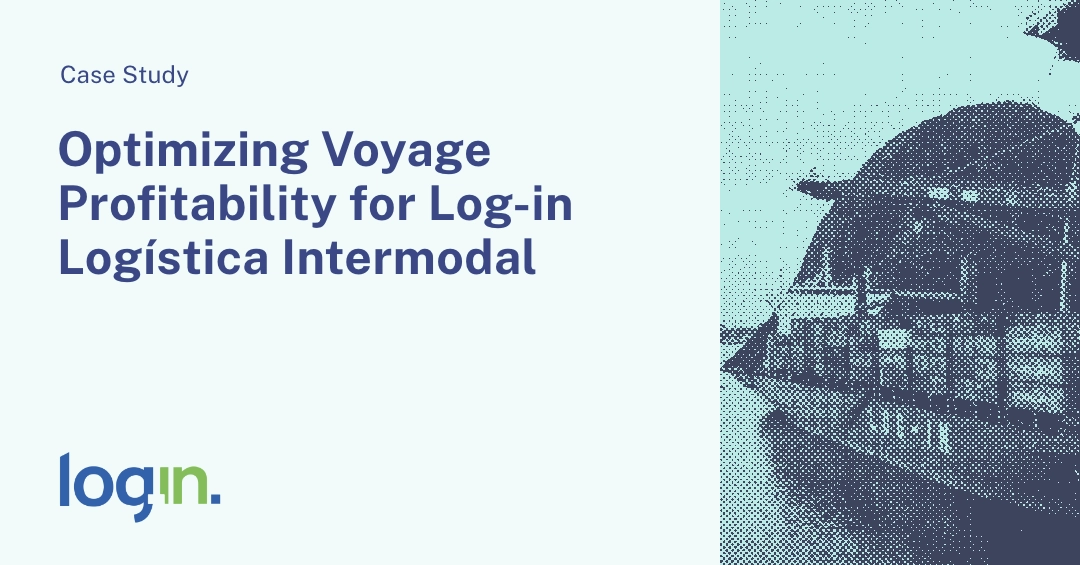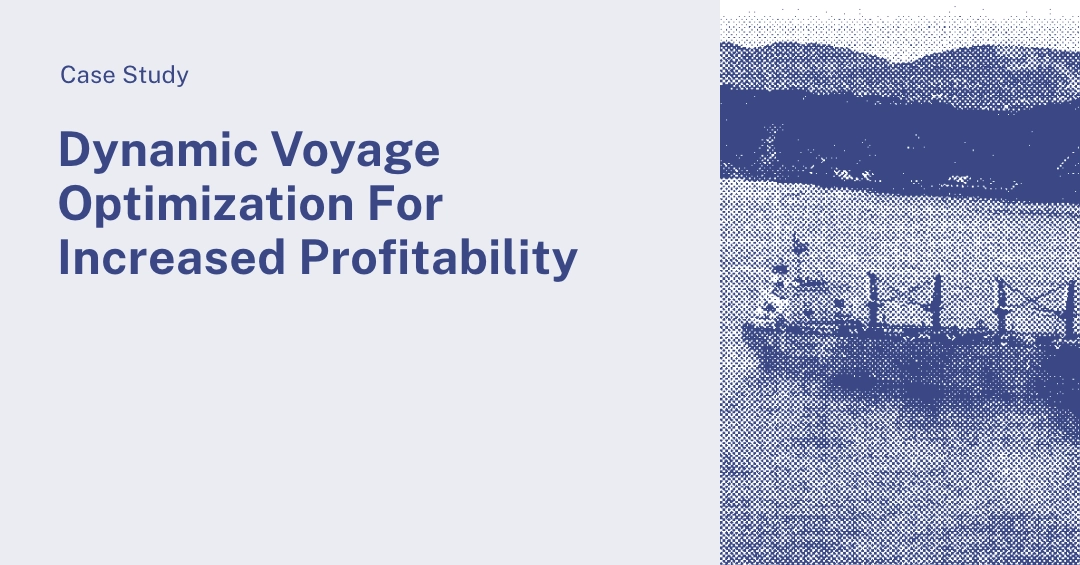The maritime industry faces increasing pressure. Fuel costs are on the rise and the IMO has firmly put the 2020 global sulphur cap into place, which further increases uncertainty around future prices. Faced with these daunting realities, shipping companies are in dire need of innovative solutions geared at monitoring, understanding, and optimizing their fleetwide fuel consumption.
Embracing robust data analytics and moving away from simplistic assumptions
Most shipping companies still rely on simplified assumptions to develop speed instructions for voyages, leading to suboptimal outcomes. Weather service providers and captains are relied upon to ensure that the vessels take the safest, most efficient routes, but they do not have access to granular speed and consumption data and, as a result, are not able to consider the true speed and consumption profile of the vessel when setting the route. With our dynamic machine learning models, operations teams can draw upon a dataset that accurately depicts expected performance in any given draft and weather condition. This unlocks new revenue and profit opportunities by generating a voyage speed or RPM instruction that maximizes a vessel’s TCE profit.
Dynamic Speed Optimization as a way to transform ship-to-shore communications
Nautilus Platform captures hundreds of real-time high-frequency data points every minute without having to install a single piece of hardware on the vessel1. Using this granular visibility into a vessel’s performance, Nautilus builds machine learning models that, given forecasted weather conditions, predict fuel consumption and speed over ground (SOG) with a high degree of accuracy.
Nautilus’ Dynamic Speed Optimization tool (DSO) uses these models to determine which speed or RPM any given vessel should operate at to maximize daily TCE profitability, given the specific commercial constraints of the voyage (i.e. fixed ETA, voyage budgetary targets, vessel operating range, etc.).
Automated RPM modulation to realize ETA optimization
For example, a ship on Nautilus Platform was traveling along the path pictured below to Nacala, Mozambique.

Nautilus’ DSO computed the speed of the vessel at every point along its route given a respective RPM and forecasted weather condition. Nautilus then modeled the effective SOG over the course of the voyage for every possible RPM setting. In this particular case, the arrival time was fixed so the model selected the RPM instruction which achieved the target ETA with the lowest fuel consumption.
For many of our clients, optimizing for an RPM setting is advantageous because vessels don’t experience RPM modulation that leads to higher fuel burn.
RPM | Fuel Consumption | Arrival Date/Time2 | |
|---|---|---|---|
| Actual Consumption and Arrival | 79.80 | 240 MT | 2018-04-20 08:40 |
| DSO RPM Instruction based on Weather Forecasts | 77.00 | 230 MT | 2018-04-20 07:23 |
| Results of RPM Instruction based on Actual Weather | 77.00 | 231 MT | 2018-04-20 07:16 |
Here, Nautilus’ DSO determined that the vessel could have saved 10 MT of fuel over that particular voyage by operating at a constant 77 RPM while still meeting the desired arrival window. Furthermore, the difference between the forecasted weather and the actual weather experienced during the voyage had minimal impact on the arrival time of the vessel and the fuel burned on the leg. As Nautilus continues to add more weather variables to the model and refine the underlying fuel and SOG models, the tool will be able to output even more customized and dynamic voyage instructions to increase profitability.
Improving voyage economics to maximize TCE profit
Nautilus’ DSO doesn’t just reduce costs. It also maximizes TCE profit. To further demonstrate the efficacy of Nautilus Labs’ DSO model, we conducted a number of analyses comparing the model’s speed instruction to the actual speeds that vessels operated at on past voyages. On one transatlantic voyage from the US Gulf Coast to the Mediterranean, a ship on Nautilus Platform was instructed to travel at 13 knots, based on a recommendation from a weather service provider and assistance from an in-house TCE optimization model. Based on this speed recommendation and the associated fuel costs, the voyage would have resulted in a daily TCE rate of approximately $21,100.
However, Nautilus Labs’ DSO, with its more accurate prediction of the vessel’s performance, identified an opportunity to travel faster and get the vessel back into the spot market more quickly in order to capitalize on favorable market rates. This faster speed increased fuel costs, but also reduced the total days of the voyage by 1.6 days – and ultimately increased the voyage TCE rate by +$250/day.
| Speed Instruction | Voyage Days | TCE Rate | |
|---|---|---|---|
| Client or Weather service provider | 13.00 knots | 34.5 days | $21,100 |
| Nautilus DSO | 13.54 knots | 32.9 days | $21,350 |
| DAILY PROFIT INCREASE | +$250 |
In this case, DSO produced an optimized speed instruction that would have generated an additional $8,225 in profit on this specific voyage. And this is representative of just one vessel in just one fleet. Extrapolated across hundreds and hundreds of voyages each year, the economic opportunity is massive.
The future of predictive decision support with Nautilus
Dynamic Speed Optimization can immediately impact shipping companies’ top and bottom lines. There is a major opportunity for owners, operators, and charterers alike to capture money that is currently being left on the table. Using DSO as a starting point, Nautilus Labs is on its way to unlocking a number of dynamic optimizations like trim, bunker purchasing, pool point allocation, and more.
As a tech company, Nautilus’ goal is to build products that solve problems for our clients in an intuitive and useful way. The Nautilus Labs engineering team is constantly developing, refining, and providing new updates, features and modules for Nautilus Labs’ clients.
1 Access to Nautilus Platform is hardware agnostic. Nautilus is able to integrate with any third party OEM to access data that is already being transmitted from ship to shore. In the event data transmission from ship to shore is not present, Nautilus can facilitate the installation of an autologger.
2 Arrival dates and times have been obfuscated.


